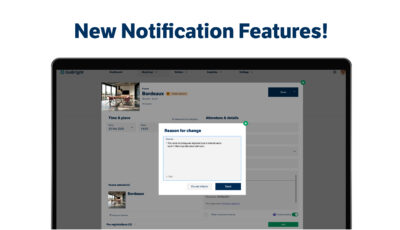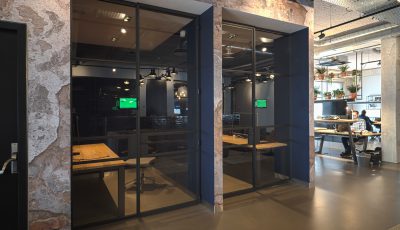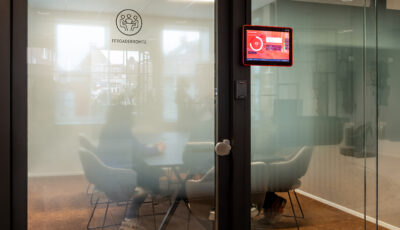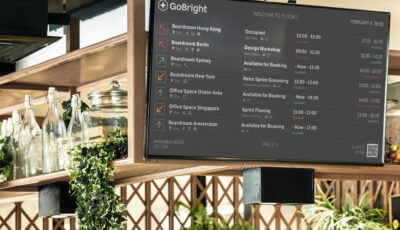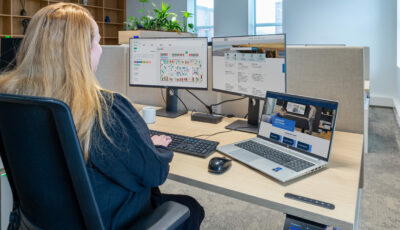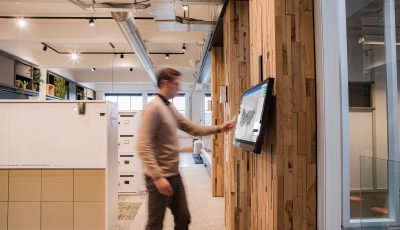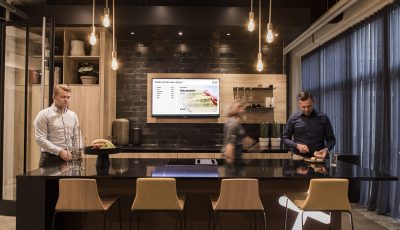Hybrid working combines office-based and remote work, allowing employees to split their time between home and workplace locations. Unlike fully remote work, it maintains regular in-person collaboration while offering location flexibility. This approach has become the preferred work model for many organisations seeking to balance productivity, employee satisfaction, and operational efficiency.
What exactly is hybrid working and how is it different from remote work?
Hybrid working is a flexible work arrangement that combines remote work with regular office attendance, typically following a structured schedule or employee choice model. Unlike remote work, which operates entirely outside traditional office spaces, hybrid working maintains physical workplace connections while offering location flexibility.
The key difference lies in the balance between locations. Remote work eliminates the office entirely, while hybrid working strategically uses both environments. This creates opportunities for face-to-face collaboration, team building, and access to office resources whilst maintaining the flexibility that employees value.
Three main hybrid work models have emerged. Employee-choice hybrid allows workers to decide when they come to the office based on personal preferences or work requirements. Employer-mandated hybrid sets specific days for office attendance, such as Tuesday through Thursday. Activity-based hybrid matches location to work type, with collaborative tasks happening in-office and focused work done remotely.
Traditional office work requires daily attendance, remote work operates entirely from home or other locations, and hybrid working creates a middle ground that adapts to different work styles and business needs.
How does hybrid working actually function in practice?
Hybrid working operates through coordinated scheduling systems that manage when employees work from different locations, supported by digital tools that maintain communication and collaboration across distributed teams. Daily operations rely on clear protocols for meetings, project management, and office space allocation.
Scheduling forms the backbone of hybrid operations. Teams coordinate their office days to ensure important collaborations happen face-to-face, while individual work can be completed remotely. Many organisations use booking systems for desks and meeting rooms, as office space requirements become more dynamic with fluctuating attendance.
Communication protocols adapt to support both in-person and remote participants. Meetings include video conferencing even when some attendees are in the same room, ensuring remote workers can participate fully. Collaboration tools like shared documents, project management platforms, and instant messaging maintain workflow continuity regardless of location.
Office space management becomes more complex but also more efficient. Hot-desking arrangements maximise space utilisation, whilst quiet areas and collaboration zones serve different work activities. Technology infrastructure must support seamless transitions between locations, with cloud-based systems and mobile device policies enabling consistent work experiences.
What are the main benefits and challenges of hybrid working?
Hybrid working offers workplace flexibility and cost savings whilst presenting coordination and communication challenges. Benefits include improved work-life balance, reduced commuting costs, and access to wider talent pools, but success requires addressing technology gaps and maintaining company culture.
The primary benefits centre on flexibility and efficiency. Employees gain better work-life balance through reduced commuting and location choice, whilst employers can reduce office space costs and attract talent from broader geographic areas. Productivity often improves as people can match their work environment to task requirements.
However, significant challenges exist. Communication becomes more complex when team members work from different locations, potentially leading to information gaps or reduced spontaneous collaboration. Maintaining company culture requires deliberate effort when interactions are less frequent and more structured.
Technology requirements increase substantially. Reliable internet connections, appropriate home office setups, and robust digital collaboration tools become necessary rather than optional. Performance management also shifts from presence-based to outcome-based approaches, requiring new skills from managers.
Coordination difficulties can emerge around scheduling, project management, and ensuring equitable treatment between office-based and remote workers. Success depends on addressing these challenges proactively rather than hoping they resolve naturally.
How do you set up a successful hybrid work environment?
Setting up successful hybrid working requires robust technology infrastructure, clear communication guidelines, and policies that support both remote and office work equally. Implementation focuses on workspace design, booking systems, performance management, and cultural adaptation to distributed team dynamics.
Technology infrastructure forms the foundation. Cloud-based systems ensure access to files and applications from any location, whilst video conferencing capabilities must handle mixed in-person and remote meetings effectively. Employees need proper equipment for home offices, including reliable internet connections, appropriate devices, and ergonomic furniture.
Workspace design in the office shifts towards collaboration-focused areas rather than individual desks. Hot-desking systems with booking platforms help manage fluctuating attendance, whilst meeting rooms need enhanced technology for hybrid participation. Storage solutions must accommodate personal items for employees who don’t have assigned desks.
Communication guidelines establish when and how different types of interactions occur. Regular check-ins, project updates, and team meetings need structured approaches that include all participants equally. Documentation becomes more important when not everyone attends every meeting or conversation.
Performance management transitions from time-based to results-based evaluation. Clear objectives, regular feedback, and outcome measurement replace physical presence as success indicators. Training helps managers develop skills for leading distributed teams effectively whilst maintaining accountability and support.
Hybrid working represents a fundamental shift in how we approach workplace flexibility and productivity. Success comes from thoughtful implementation that addresses both technological and cultural requirements. We help organisations navigate this transition with integrated solutions that make hybrid working seamless and efficient for everyone involved.
